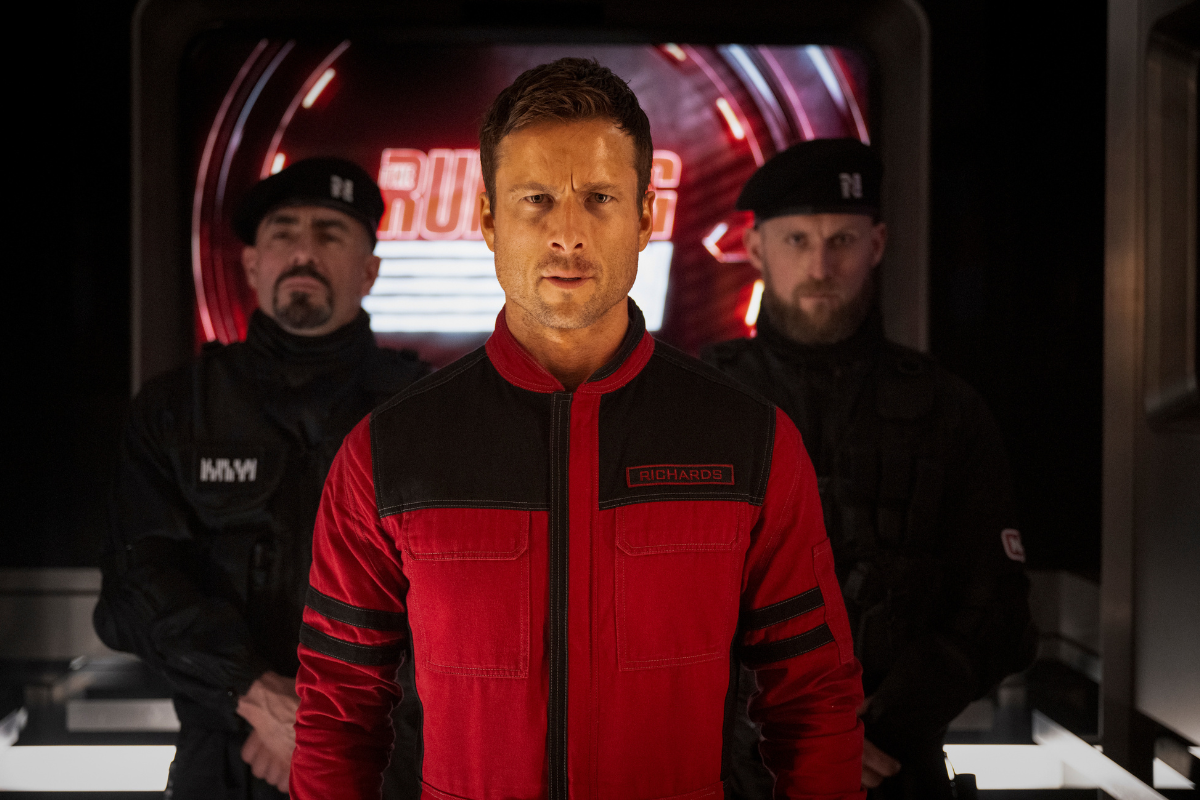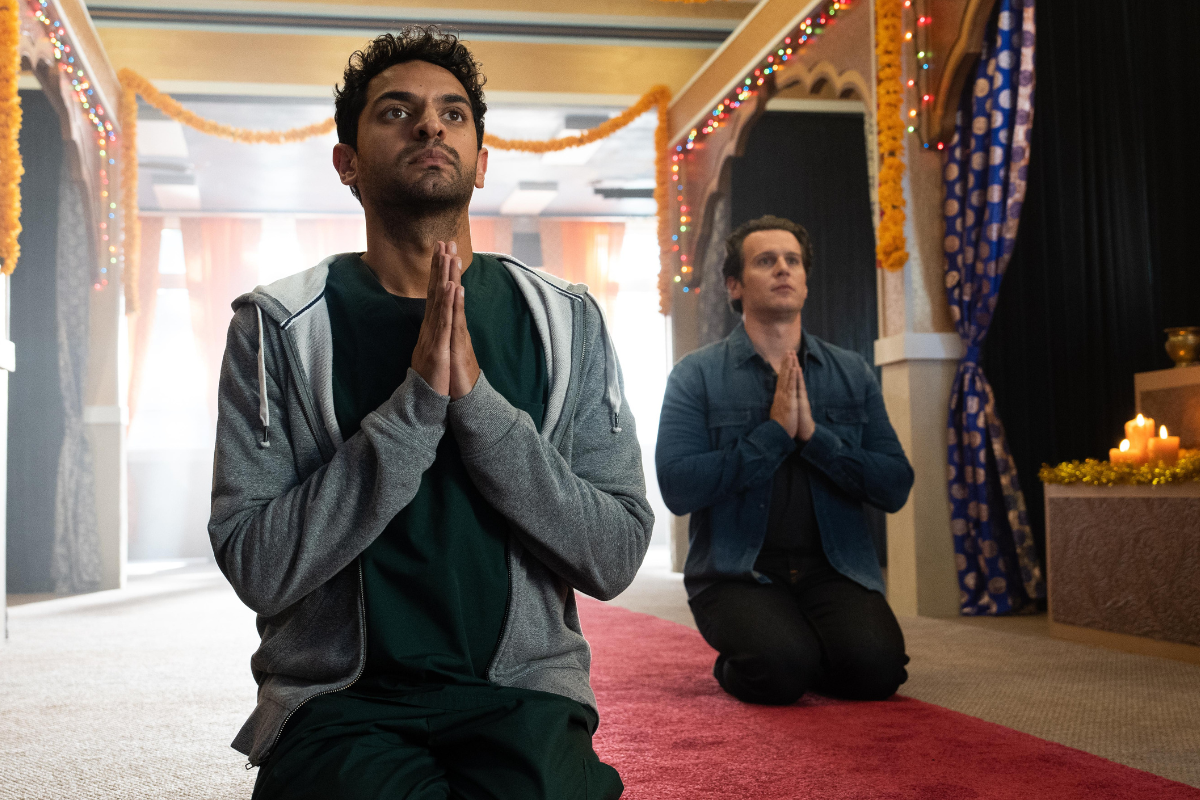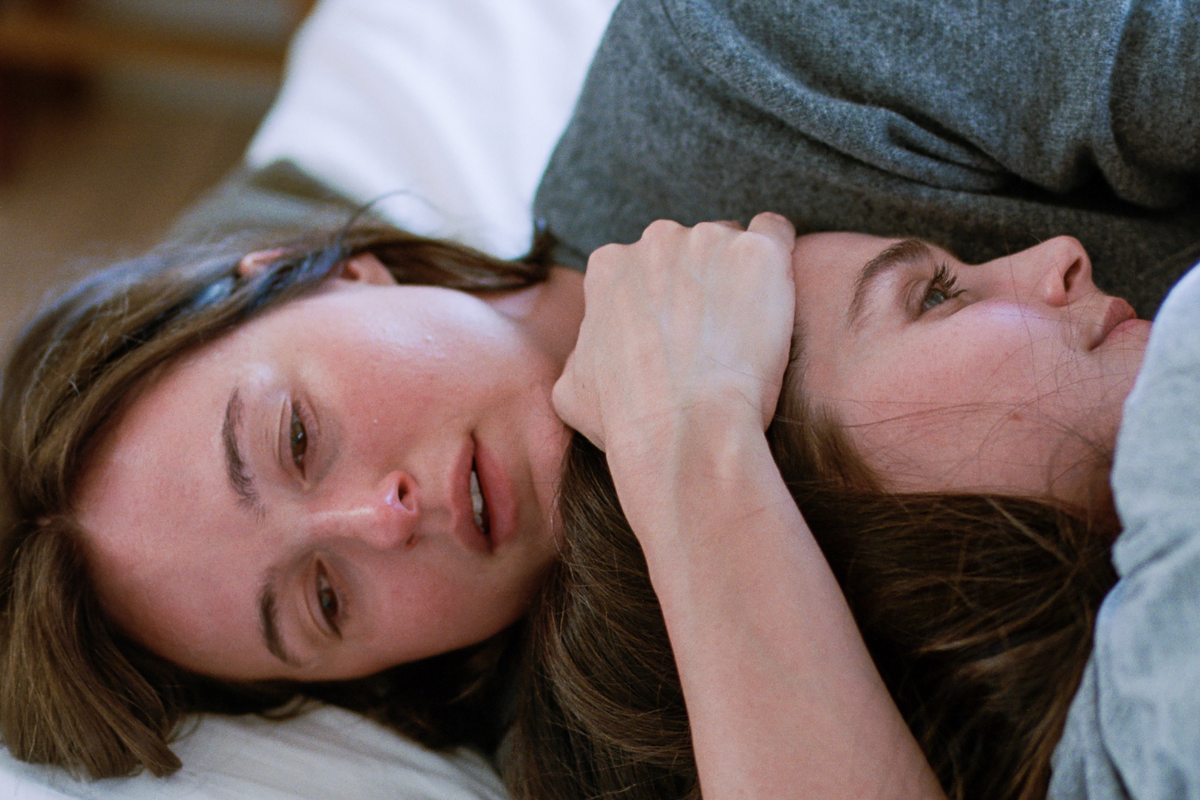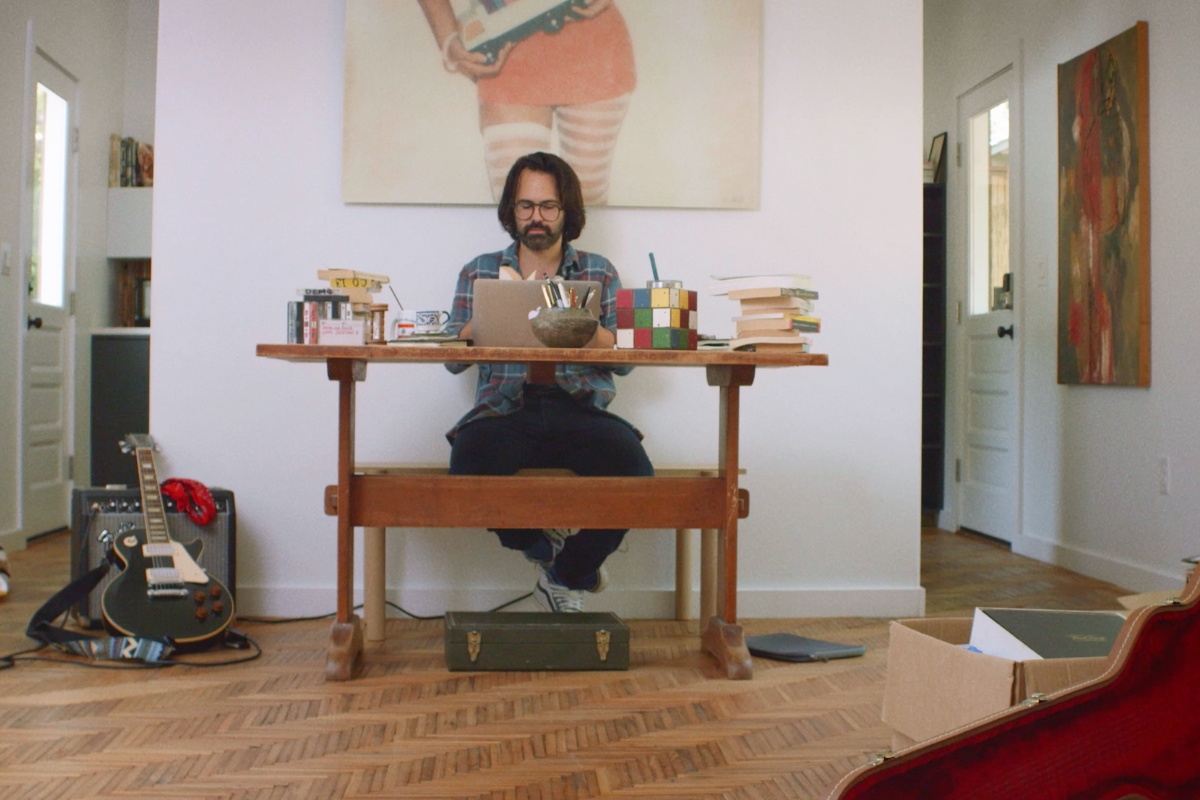Adaptive Documentary Filmmaking with ‘Move Me’ Filmmaker Kelsey Peterson
‘Move Me’ filmmaker Kelsey Peterson shares with Script the importance of showing moments of unbridled ambition and moments of deep reflection, the unpredictability of documentary filmmaking, and what’s next for her on her creative journey.
At 27, Kelsey Peterson dove into Lake Superior, off the shores of Wisconsin, and emerged paralyzed. Now, the former dancer struggles to redefine who she is while adapting to life with a disability. At the intersection of acceptance and hope, Kelsey unexpectedly finds herself facing an opportunity to dance again, showing her a new path toward acceptance, all the while grappling with a decision to participate in a cutting-edge clinical trial that could bring her much-desired change — forcing her to evaluate the possibilities of her recovery, body and spirit.
In Move Me, a first-time filmmaker with a disability simultaneously takes the reins behind the scenes, while revealing her inner revolution through raw storytelling onscreen.
In this powerful and moving documentary Move Me, subject matter and co-director Kelsey Peterson wonderfully articulates her adaptive process to forgiveness, healing, and the reconnection to her love of dance. I had the absolute pleasure of speaking with Kelsey about the filmmaking process, showing moments of unbridled ambition and moments of deep reflection, the unpredictability of documentary filmmaking, and what's next for her on her creative journey.
This interview has been edited for content and clarity.
Sadie Dean: How did you initially connect with Daniel?
Kelsey Peterson: Daniel and I met through one of our shooters Hunter Johnson. We met in a coffee shop and talked about the film. And it wasn't until probably a year or so later, that the film had really shifted, and I needed more help. And he organically stepped in and stepped up and filled those gaps that I couldn't, and became the team member that I really needed, and the film partner that I really needed. It was pretty amazing. I couldn't have done it without him.
Sadie: Once he came on board, did he help reshape where the story was going, because he had that outsider perspective?
Kelsey: It's really hard being the subject of the film and a co-director, so I needed that perspective in order to know what to share, and where my blind spots were, and he just had an experience that I did not have. I was totally new at this. I still am new at this. At the time, the story had kind of already revealed the path that we needed to go on, because my life was just unfolding in that way. My dad got sick. And the clinical trial came into my sphere as a possibility. And my friend Gabriel approached me about A Cripples Dance - kind of all at the same time. And so, it was like all these seemingly dichotomous things. Also, things that had a lot of parallels happening and bringing me a lot of challenges and growth. It was perfect that Daniel came when he did and was able to see things that I didn't and really move things along in a way that I couldn't have.
Sadie: I feel like, at the core of this movie, it's this journey to forgiveness and how to learn and grow from this experience. With all these big life-changing events seemingly happening all at once, were there any plot points that took you by surprise and changed the course of the story for the documentary?
Kelsey: The whole thing was unpredictable. When we started this film, I was at a completely different place in my life with my disability - I couldn't even say I'm a person with a disability and feel comfortable with that - let alone empowered by that or see the beauty and the opportunities in that and what I have to learn and what I can teach the world because of that. If and when I want to. [laughs] I think that initial surrender was really big and it was appropriate in terms of making a documentary film. I learned you just really have to follow the story that wants to be told, and that was really unpredictable. I did not think that the camera was going to turn on me in such an intimate and vulnerable way. And I just tried to do my best to be as authentic and vulnerable as possible. And so, in that way, the film created this little container of transformation. And I was so lucky that that felt like a very safe space. I had such a supportive team that were so sensitive to what I was going through and so open to learning about my experience that it felt safe for me to explore with them and to be really open with them and to our audience.
Sadie: Yeah, that's a beautiful thing. Yeah. There’s this beautiful quip from Gabe's dad, he says, “Nothing is more beautiful than the truth.” And that's you in this movie and what you were all collectively exploring. Did you have any part in the post-production process or did you need time to step back and take moment for yourself?
Kelsey: Oh my gosh, I give her so much credit, Nico is such a big part of shaping this story and putting it together and Nico Bovat is her name. She's just amazing. This was a big collaborative thing for the three of us. We did it all over Zoom. She's in Portland, Oregon, and Daniel was in Minneapolis and I was all over the place. I love how adaptability, like that theme of adaptation, comes up in my life and also in the filmmaking process; we were able to work as a team and build something that I'm proud of even despite the challenges of the pandemic. There were moments where like on Zoom, and Evercast, we'd come together and like, ‘Whoa you guys,’ there’ll be so many moments where we'd all be crying, or I'd be crying and breaking down because I'm watching myself losing my dad and having to edit these scenes, freshly after his passing. And so that process, post-production was really emotional for me. And it made it hard for me sometimes to even get close to the film. I had to force myself to sometimes. I didn't really want to; it was very therapeutic. But it was also like, I had to force myself to go to therapy [laughs] is what it felt like. I'm so grateful and I found the healing aspects of that. But there were times where it was really painful and just hard.
Sadie: When you dance for the first time in the movie, it's so cathartic and moving as a viewer. Through the power of dance, you were able to evoke those emotions, through a camera lens. I'm curious, what was that like in getting back out there in this state and be so vulnerable?
Kelsey: That's exactly how I wanted people to feel after watching this. Dance is for everyone and anyone. And it just was really for me about abstracting what it meant for me to be a dancer and how that looked. Because it was something that I completely removed as a possibility in my mind for a long time. I think my own ableism and my own grief, were really largely in the way. So, when I was finally able to do that, and I don't think I would have been able to without Gabe, someone from the community and my really dear friend asking me, someone who knows my experience asking me to help him, really removed me from my own ego and my own fears and doubts and whatever, so that I could help him and heal in a lot of ways. Being able to dance again, it was everything. It was like I was lit on fire again and coming alive and seeing so many possibilities to what I could do as an artist and that is totally invaluable.
Sadie: In terms of that collaboration between the two of you and connecting on this and using his music and your dancing as a mode of vulnerable expression, did he write the song knowing that he wanted you to do this for him?
Kelsey: that was one of the most fun parts for me was connecting so deeply to his music. I knew what he meant when he talked like in “House Song” when he talks about this house being his body and watching it change and feeling like you're a stranger in it. I connected so deeply with that, which was why it was that much more fun to play within that space. And Gabe wrote the song for our credits for the film. So that was a really cool experience. And I got to sing on it a little bit and be in the recording studio with him when he did it. But as far as the music, he had already written all that - he wanted to dance, and he was like, ‘I've always wanted to dance, I'm a musician, I'm going to write music that I want to dance to.’ And so, he came prepared with all of that. And we picked out the songs that we both vibe with and that we could make the most out of and went from there.
Sadie: That's incredible. He's such a talent. What do you hope the audience will take away after watching this documentary?
Kelsey: Oh, man, so many things. I hope that people see how adaptable we are as humans. And that we inevitably lose things throughout our lives; we're always changing, our bodies are always changing. But it is our superpower that we often forget about to adapt. And to lean into that. And I always say it but surrender to the flow of life and see what happens when you do that. Because I know for me, it opened up a whole new world, and continue to try to do that. But it's not easy. It takes a lot of work to do that. There’s a lot of harmful narratives toward disability, I hope that this creates more empathy and understanding, and I hope that there's some healing for the disability community and for the able-bodied community and that there can be more of a bridge between those two.
Sadie: As an artist, what's next for you? Are you going to start choreographing more stuff, make more films, or maybe some music videos for Gabe?
Kelsey: All the above, you just nailed it. [laughs] Yeah, Gabe and I are talking about a music video. I'm so excited about that. Also, talking about A Cripples Dance mini-tour this fall possibly. And then we're also writing a scripted series.
Sadie: Amazing!
Kelsey: Yeah, it’s about two quadriplegic friends, navigating relationships and sex and being artists in an able-bodied world and telling that from our perspective as people with disabilities.
2022 Full Frame Doc Film Festival (World Premiere)
Streaming April 7 - 10, 2022 *All Virtual Festival
Streaming April 7 - 13, 2022
In-Person Screening Tues. April 12, 8:00pm
Marlene Meyerson JCC Manhattan
Learn more about the craft and business of screenwriting from our Script University courses!
Sadie Dean is the Editor of Script Magazine and writes the screenwriting column, Take Two, for Writer’s Digest print magazine. She is also the co-host of the Reckless Creatives podcast. Sadie is a writer and filmmaker based in Los Angeles, and received her Master of Fine Arts in Screenwriting from The American Film Institute. She has been serving the screenwriting community for nearly a decade by providing resources, contests, consulting, events, and education for writers across the globe. Sadie is an accomplished writer herself, in which she has been optioned, written on spec, and has had her work produced. Additionally, she was a 2nd rounder in the Sundance Screenwriting Lab and has been nominated for The Humanitas Prize for a TV spec with her writing partner. Sadie has also served as a Script Supervisor on projects for WB, TBS and AwesomenessTV, as well as many independent productions. She has also produced music videos, short films and a feature documentary. Sadie is also a proud member of Women in Film.
Follow Sadie and her musings on Twitter @SadieKDean







